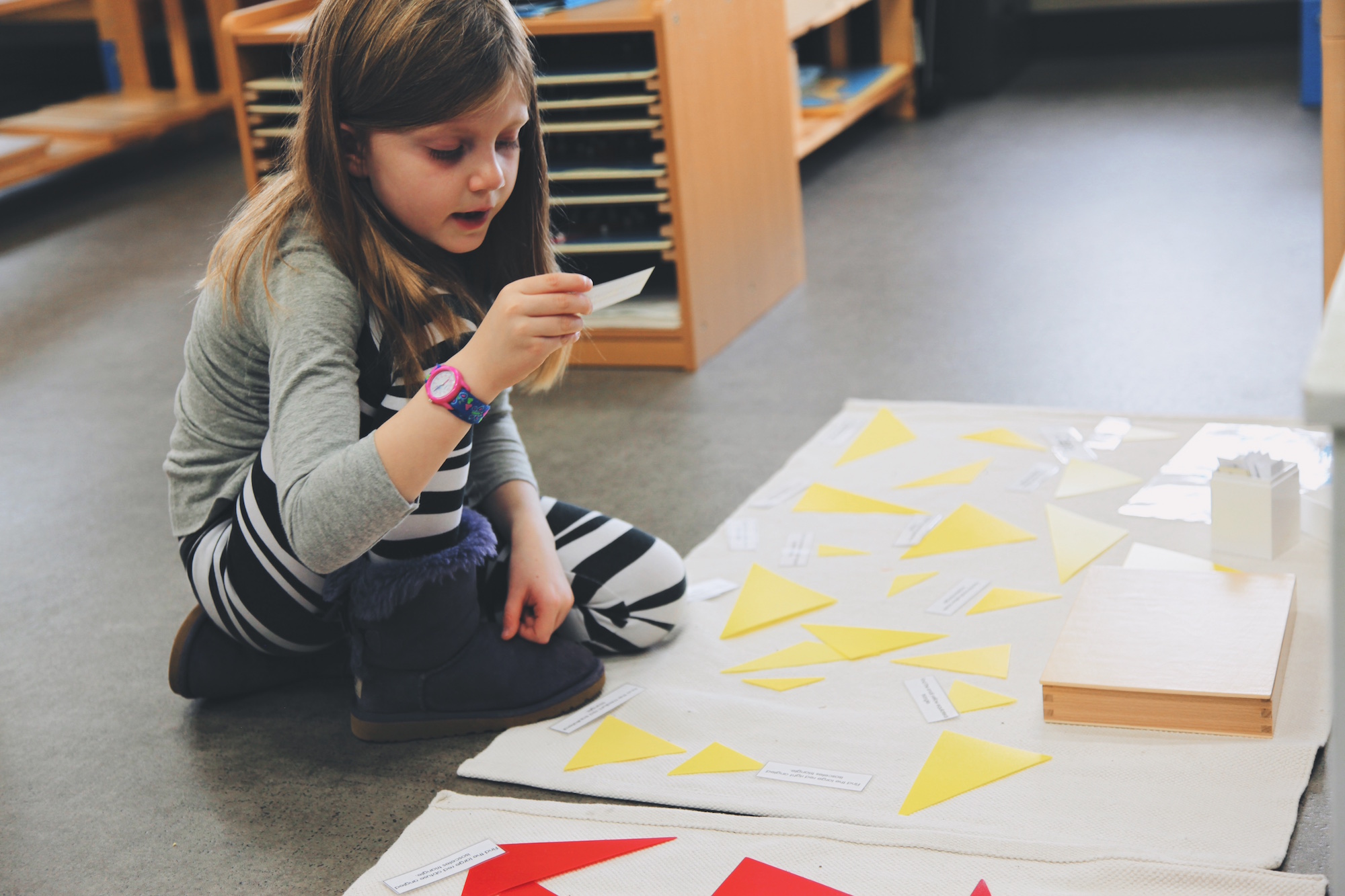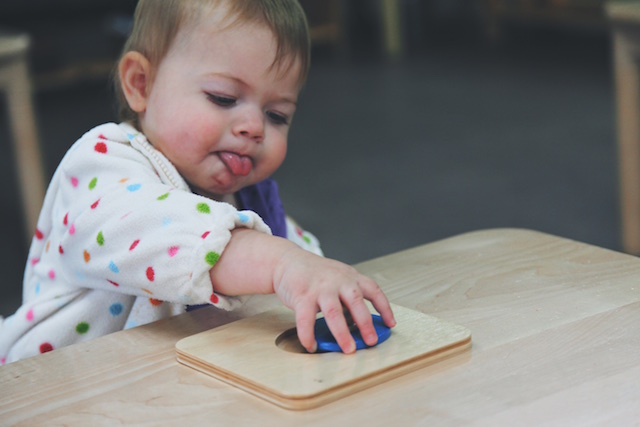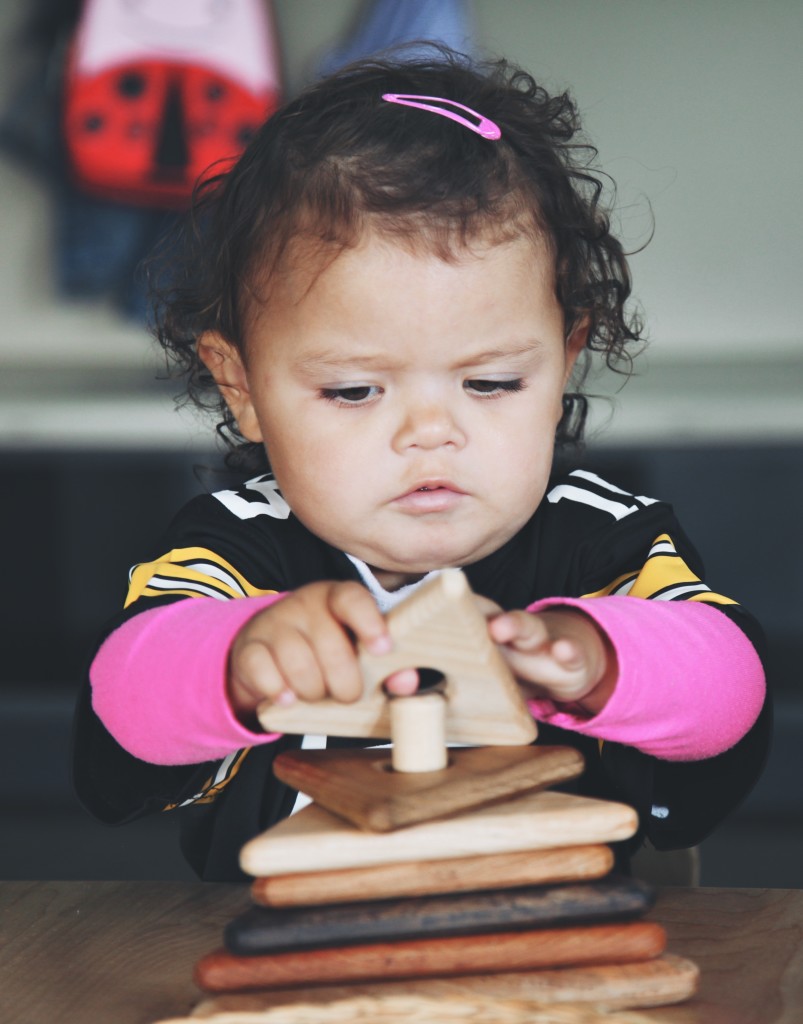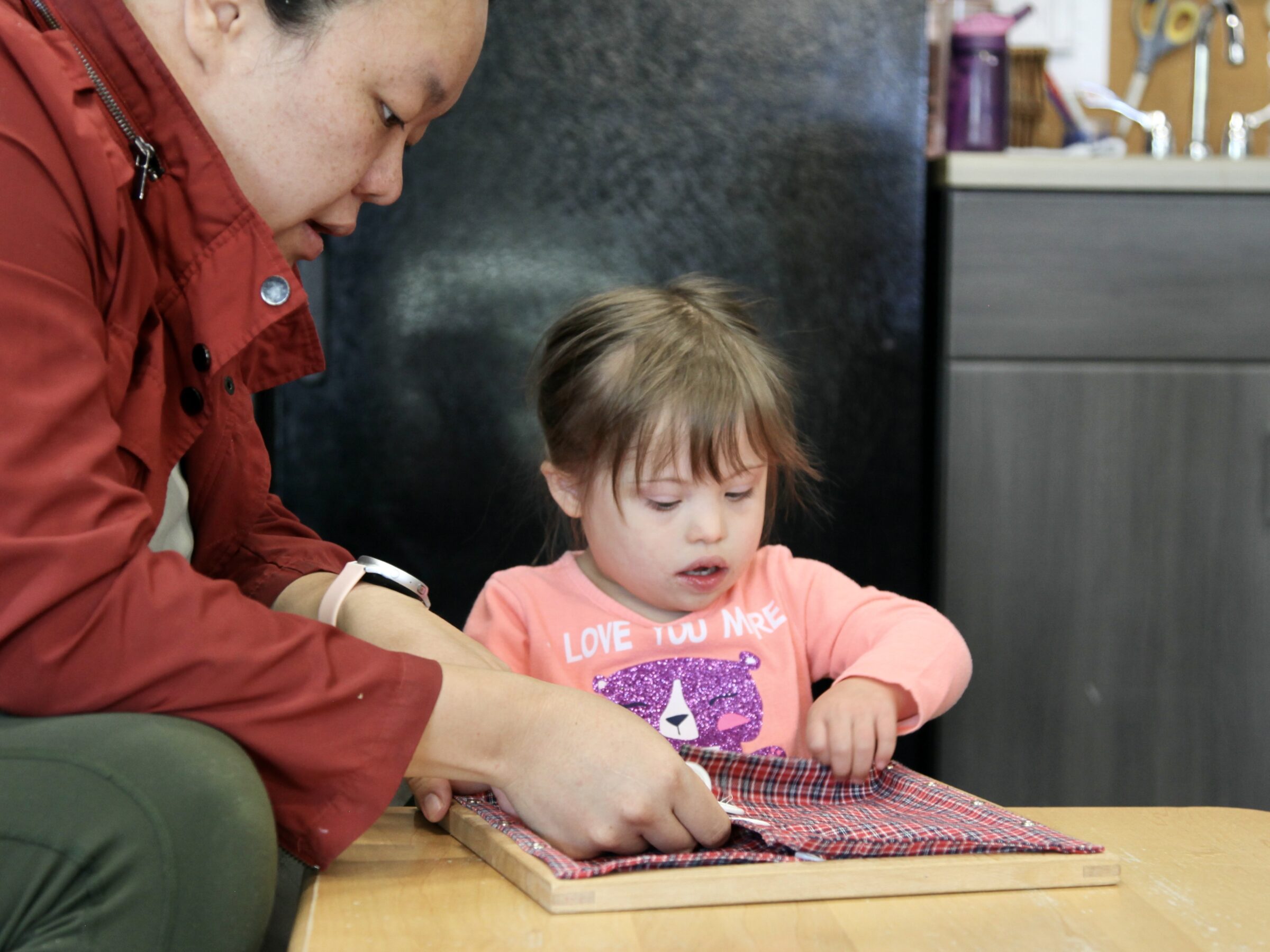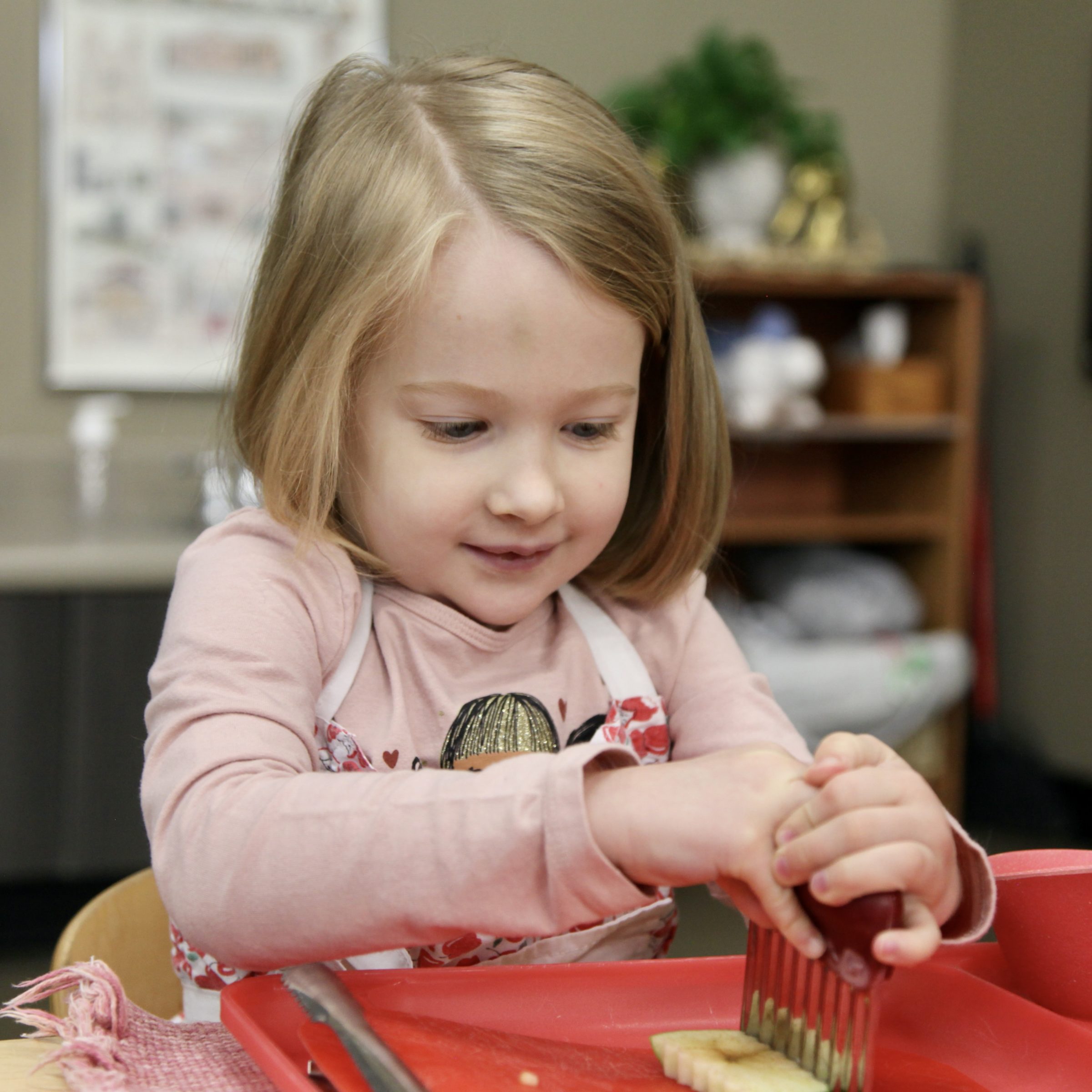Geometry from Day One
Thoughts & Reflections
One of the most magical things about Montessori, one of the ways the genius of Montessori is revealed, is in the repetition and building of materials and skills. When a child moves from a mastered material to the next one in a series, the change is small, manageable, incremental. This both highlights the change, as well as making it accessible to the child.
We’d like to walk through a progression of materials from our youngest children to our oldest children. We hope this highlights the lovely way the materials grow with and challenge children at every level of their development.
Children are interested in shapes, and books and toys capitalize on this interest. In our Toddler Environment, we have several puzzles and materials for shape.
There are puzzles with just one shape, a circle, a square, or a triangle. A child uses her whole hand to grasp the oversized knob and replace the single shape back into the frame.
This seems simple to adults. The child is refining hand-eye coordination, using their whole hand with opposing thumb movement, as well as becoming intimately familiar with geometric shapes.
When a child can easily complete this single-piece puzzle, they are ready to complete a stacking tower puzzle.
This one features triangles. The polished wood gives beautiful feedback to the child, begs to be touched. The triangles are equilateral; all sides and angles are the same. The regularity and consistency of this shape are becoming familiar to the child. In a Montessori Elementary classroom, they would work with geometric equations and building materials to prove the stability of this shape; as a toddler they truly feel the same stability.
In the Primary classroom, there are more puzzles with shapes. Puzzles are familiar, yet challenging. A child learns to construct shapes using clues their unconscious mind is discerning.

The Geometry Cabinet is a material a child could use for years in a Primary classroom. They can sensorially explore the material, comparing obtuse and acute triangles, isosceles and scalene triangles, looking for similarities and nuances that are unique to the triangle family.
There are cards available for matching. This is also preparing the child’s eye for recognizing letter shapes. At this point, the child is also learning the names of shapes, being able to put names to the qualities he’s been visually identifying.
The oldest child, a fluent reader, not only knows all the qualities of different triangles, but can discern subtle differences, such as an acute angled isosceles triangle or an obtuse angled isosceles triangle. They have the logical filtering capacity to look at two rugs full of triangles and find the one that is being described — find the small, red, obtuse angled scalene triangle.
Starting from their earliest days in the classroom, Geometry is an accessible part of the child’s everyday life. It isn’t scary or overwhelming, it’s fun, full of games and subtlety. When the child gets to high school and takes a geometry course, or decides they want to be an architect or an artist, and learns more about the mathematical properties of these shapes, they will have a visceral, fundamental understanding of them that resonates to their core.
Written by:
Charlotte Snyder
